4.6: Why Muscle Matters
- Page ID
- 2391
\( \newcommand{\vecs}[1]{\overset { \scriptstyle \rightharpoonup} {\mathbf{#1}} } \)
\( \newcommand{\vecd}[1]{\overset{-\!-\!\rightharpoonup}{\vphantom{a}\smash {#1}}} \)
\( \newcommand{\id}{\mathrm{id}}\) \( \newcommand{\Span}{\mathrm{span}}\)
( \newcommand{\kernel}{\mathrm{null}\,}\) \( \newcommand{\range}{\mathrm{range}\,}\)
\( \newcommand{\RealPart}{\mathrm{Re}}\) \( \newcommand{\ImaginaryPart}{\mathrm{Im}}\)
\( \newcommand{\Argument}{\mathrm{Arg}}\) \( \newcommand{\norm}[1]{\| #1 \|}\)
\( \newcommand{\inner}[2]{\langle #1, #2 \rangle}\)
\( \newcommand{\Span}{\mathrm{span}}\)
\( \newcommand{\id}{\mathrm{id}}\)
\( \newcommand{\Span}{\mathrm{span}}\)
\( \newcommand{\kernel}{\mathrm{null}\,}\)
\( \newcommand{\range}{\mathrm{range}\,}\)
\( \newcommand{\RealPart}{\mathrm{Re}}\)
\( \newcommand{\ImaginaryPart}{\mathrm{Im}}\)
\( \newcommand{\Argument}{\mathrm{Arg}}\)
\( \newcommand{\norm}[1]{\| #1 \|}\)
\( \newcommand{\inner}[2]{\langle #1, #2 \rangle}\)
\( \newcommand{\Span}{\mathrm{span}}\) \( \newcommand{\AA}{\unicode[.8,0]{x212B}}\)
\( \newcommand{\vectorA}[1]{\vec{#1}} % arrow\)
\( \newcommand{\vectorAt}[1]{\vec{\text{#1}}} % arrow\)
\( \newcommand{\vectorB}[1]{\overset { \scriptstyle \rightharpoonup} {\mathbf{#1}} } \)
\( \newcommand{\vectorC}[1]{\textbf{#1}} \)
\( \newcommand{\vectorD}[1]{\overrightarrow{#1}} \)
\( \newcommand{\vectorDt}[1]{\overrightarrow{\text{#1}}} \)
\( \newcommand{\vectE}[1]{\overset{-\!-\!\rightharpoonup}{\vphantom{a}\smash{\mathbf {#1}}}} \)
\( \newcommand{\vecs}[1]{\overset { \scriptstyle \rightharpoonup} {\mathbf{#1}} } \)
\( \newcommand{\vecd}[1]{\overset{-\!-\!\rightharpoonup}{\vphantom{a}\smash {#1}}} \)
\(\newcommand{\avec}{\mathbf a}\) \(\newcommand{\bvec}{\mathbf b}\) \(\newcommand{\cvec}{\mathbf c}\) \(\newcommand{\dvec}{\mathbf d}\) \(\newcommand{\dtil}{\widetilde{\mathbf d}}\) \(\newcommand{\evec}{\mathbf e}\) \(\newcommand{\fvec}{\mathbf f}\) \(\newcommand{\nvec}{\mathbf n}\) \(\newcommand{\pvec}{\mathbf p}\) \(\newcommand{\qvec}{\mathbf q}\) \(\newcommand{\svec}{\mathbf s}\) \(\newcommand{\tvec}{\mathbf t}\) \(\newcommand{\uvec}{\mathbf u}\) \(\newcommand{\vvec}{\mathbf v}\) \(\newcommand{\wvec}{\mathbf w}\) \(\newcommand{\xvec}{\mathbf x}\) \(\newcommand{\yvec}{\mathbf y}\) \(\newcommand{\zvec}{\mathbf z}\) \(\newcommand{\rvec}{\mathbf r}\) \(\newcommand{\mvec}{\mathbf m}\) \(\newcommand{\zerovec}{\mathbf 0}\) \(\newcommand{\onevec}{\mathbf 1}\) \(\newcommand{\real}{\mathbb R}\) \(\newcommand{\twovec}[2]{\left[\begin{array}{r}#1 \\ #2 \end{array}\right]}\) \(\newcommand{\ctwovec}[2]{\left[\begin{array}{c}#1 \\ #2 \end{array}\right]}\) \(\newcommand{\threevec}[3]{\left[\begin{array}{r}#1 \\ #2 \\ #3 \end{array}\right]}\) \(\newcommand{\cthreevec}[3]{\left[\begin{array}{c}#1 \\ #2 \\ #3 \end{array}\right]}\) \(\newcommand{\fourvec}[4]{\left[\begin{array}{r}#1 \\ #2 \\ #3 \\ #4 \end{array}\right]}\) \(\newcommand{\cfourvec}[4]{\left[\begin{array}{c}#1 \\ #2 \\ #3 \\ #4 \end{array}\right]}\) \(\newcommand{\fivevec}[5]{\left[\begin{array}{r}#1 \\ #2 \\ #3 \\ #4 \\ #5 \\ \end{array}\right]}\) \(\newcommand{\cfivevec}[5]{\left[\begin{array}{c}#1 \\ #2 \\ #3 \\ #4 \\ #5 \\ \end{array}\right]}\) \(\newcommand{\mattwo}[4]{\left[\begin{array}{rr}#1 \amp #2 \\ #3 \amp #4 \\ \end{array}\right]}\) \(\newcommand{\laspan}[1]{\text{Span}\{#1\}}\) \(\newcommand{\bcal}{\cal B}\) \(\newcommand{\ccal}{\cal C}\) \(\newcommand{\scal}{\cal S}\) \(\newcommand{\wcal}{\cal W}\) \(\newcommand{\ecal}{\cal E}\) \(\newcommand{\coords}[2]{\left\{#1\right\}_{#2}}\) \(\newcommand{\gray}[1]{\color{gray}{#1}}\) \(\newcommand{\lgray}[1]{\color{lightgray}{#1}}\) \(\newcommand{\rank}{\operatorname{rank}}\) \(\newcommand{\row}{\text{Row}}\) \(\newcommand{\col}{\text{Col}}\) \(\renewcommand{\row}{\text{Row}}\) \(\newcommand{\nul}{\text{Nul}}\) \(\newcommand{\var}{\text{Var}}\) \(\newcommand{\corr}{\text{corr}}\) \(\newcommand{\len}[1]{\left|#1\right|}\) \(\newcommand{\bbar}{\overline{\bvec}}\) \(\newcommand{\bhat}{\widehat{\bvec}}\) \(\newcommand{\bperp}{\bvec^\perp}\) \(\newcommand{\xhat}{\widehat{\xvec}}\) \(\newcommand{\vhat}{\widehat{\vvec}}\) \(\newcommand{\uhat}{\widehat{\uvec}}\) \(\newcommand{\what}{\widehat{\wvec}}\) \(\newcommand{\Sighat}{\widehat{\Sigma}}\) \(\newcommand{\lt}{<}\) \(\newcommand{\gt}{>}\) \(\newcommand{\amp}{&}\) \(\definecolor{fillinmathshade}{gray}{0.9}\)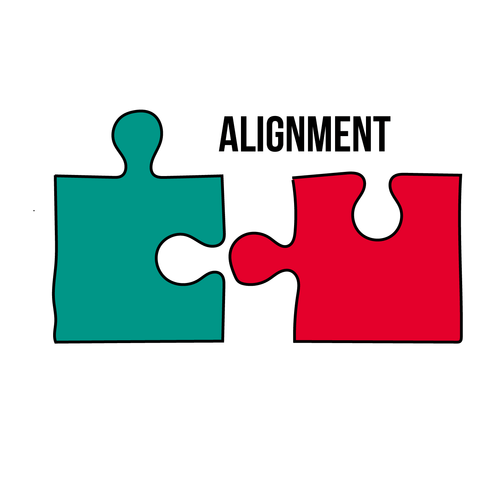
National Health Education Standards (NHES)
- 1.12.7 Compare and contrast the benefits of and barriers to practicing a variety of healthy behaviors, such as being physically active every day.
- 6.12.1-6.12.4 Setting goals to improve your health, such as increasing physical activity.
Wellness Guidelines
- Increase frequency of physical activity.
- Decrease sedentary behavior

- Instruction: In a group or think-pair-share format, have participants discuss the following questions. Acknowledge those who have progressed toward their goal(s) and encourage anyone who wants to change or modify their goal to get 1:1 support.
- Share: Let’s discuss our SMART Goals.
- How is it going with your current SMART goal?
- What are some ways you can improve progress towards your goal? (Grows)
- What are some ways you are doing well with progress towards your goal? (Glows)
GUIDELINE: Increase Frequency of Physical Activity and Decrease Sedentary Behavior
- Share: What guideline do you think is related to today’s lesson? Who has a SMART Goal related to this guideline?
- Instruction: Select one activity.
- Guideline Popcorn: The group lists all 8 guidelines rapidly in popcorn format.
- Guideline Charades: Divide participants into groups and assign each a guideline. Each group has to silently act out the guideline for the rest to guess.
- Two Truths and One Lie:
- Truth 1: If I don't use my muscles, I will lose them as I age.
- Truth 2: Building muscles help strengthen my bones.
- Lie: Only athletes need to exercise and build muscles.
- Questions to discuss and/or journal:
- What are some of your favorite exercises?
- What muscles do those exercises target?
- What exercises do you think are considered to be muscle-strengthening?
- How often do you do muscle-strengthening exercises?
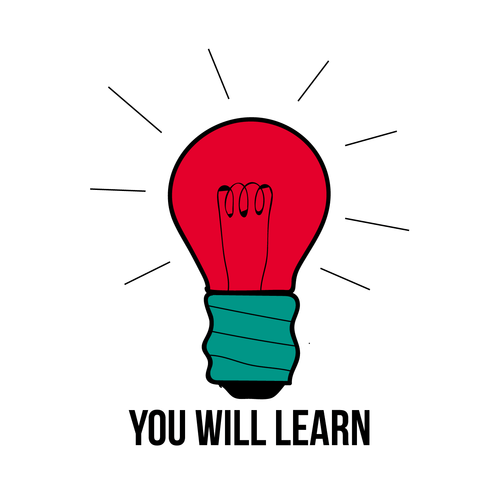
- Why it is important to build muscles, strength, and endurance.
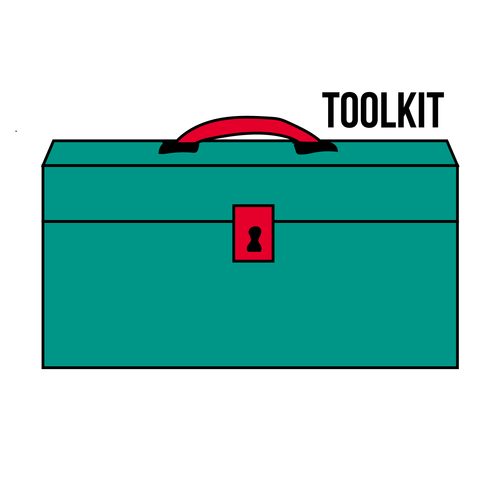
- Worksheets
- Slides presentation
- Whiteboard eraser (or a similar object)
- Tools for your circuits (water bottle and textbook)
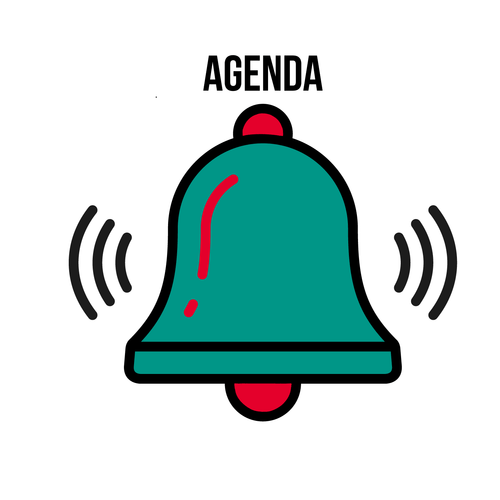
- Do Now
- The Magic of Muscles
- Endurance and Strength
- No Weights, No Problem Circuits
- Exit Ticket
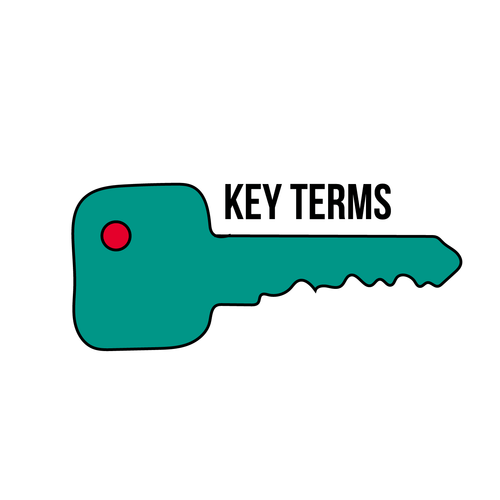
[As defined by HHS, 2008; CDC, 2004; Dor-Haim et al., 2018]
- Exercise: Movement of the body that uses energy that is planned, structured, repetitive, and purposive.
- Fitness: Ability to do daily tasks with energy and without getting tired.
- Insulin: A hormone made by the pancreas that helps glucose from food get into your cells to be used for energy.
- Body Composition: The different components of the body are measured to include the total body and regions of the body including total mass, fat mass, percentage fat, lean soft tissue (excluding bone mineral content), and fat-free mass (including bone mineral content).
- Muscle-strengthening: Exercises that make muscles do more work than usual by holding against an applied force or weight.
- Bone-Strengthening: Exercises that produces an impact or tension force on the bones.
- Muscular Strength: How much force you can exert (apply) or how much weight you can lift.
- Muscular Endurance: How many times or how long you can exert (apply) force without getting too tired.
- Circuit Training: A form of body conditioning that involves a combination of a resistance training set followed immediately by an aerobic exercise interval.
- Repetition: Number of times a person lifts a weight for example.
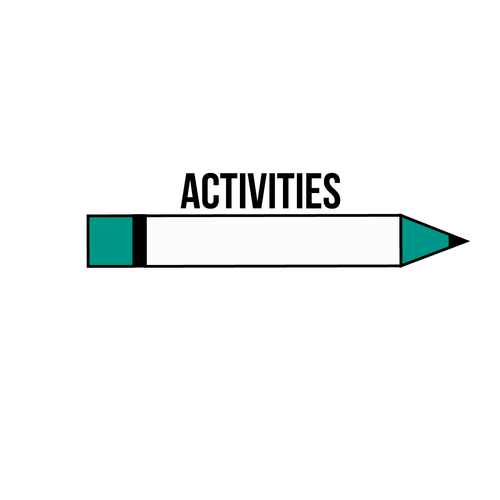
Do Now:
- Set Up:
- Display the following image on the board or via projector.
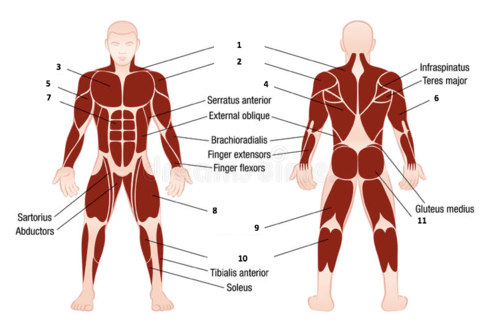
- Instruction:
- Define exercise. Exercise is the movement of the body that uses energy that is planned, structured, repetitive, and purposive (HHS, 2008).
- As an entire group, have participants locate each muscle group on the image of a person (below) and then identify a type of exercise that would strengthen that muscle group:
- Trapezius: Located around the neck, worked out with shrugs.
- Deltoids: Located at the top of the arm, worked out with shoulder presses.
- Pectoralis Major: Located at the chest, worked out with the bench
- Latissimus Dorsi: Located in the back, worked out with lat pulldowns.
- Biceps: Located at the front of the arm, worked out with curls.
- Triceps: Located at the back of the arm, worked out with pulldowns.
- Abdominals: Located at the front, sides, and back of the torso, worked out with crunches.
- Quadriceps: Located at the front of the thigh, worked out with squats.
- Hamstrings: Located at the back of the upper leg, worked out with lunges.
- Gastrocnemius (calves): Located at the back of the lower leg, worked out with calf raises.
- Gluteus Maximus: Located on your rear end, worked out with leg presses.
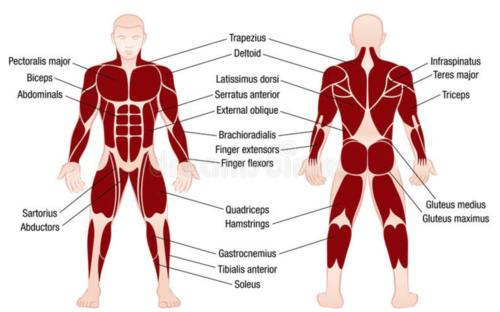 Image from: www.dreamstime.com/stock-ill...-image90796905
Image from: www.dreamstime.com/stock-ill...-image90796905- Share:
- Now, that you’ve been introduced to some of the major muscles in your body, let’s learn more about the muscular system and how it relates to your overall fitness! Fitness is the ability to do daily tasks with energy and without getting tired (HHS, 2008).
Good to Know: The Magic of Muscles
- Share:
- Did you know there are over 600 muscles in the human body? That number makes sense when you think about how much we rely on our muscles from running to getting out of our bed to pumping blood through our bodies!
- While some muscles are under your control, others do their jobs without you having to think about it at all. Can anyone think of an example of a muscle that works independently of your mind? The heart!
- Optional: Play this video on the muscular system: youtu.be/VVL-8zr2hk4
- Optional: Play this video on muscle growth: youtu.be/2tM1LFFxeKg
- Why might building muscles be an important part of your fitness?
- Responses may include (CDC, 2018):
- Helps you grow stronger and move more efficiently
- Helps strengthen your bones
- Decrease risk for injury
- Improves the health of your heart and lungs
- Promotes insulin sensitivity (Bird & Hawley, 2017). Insulin is a hormone made by the pancreas that helps glucose from food get into your cells to be used for energy (NIH, 2016). If your body is more sensitive to insulin, you will need a smaller amount of insulin to lower your blood sugar levels.
- Helps with weight management and protects against obesity
- Reduces anxiety/depression symptoms
- Responses may include (CDC, 2018):
- As part of your 60 minutes of daily physical activity, be sure to include muscle-strengthening/bone-strengthening physical activity on at least 3 days of the week (HHS, 2008).
- Muscle-strengthening activities are ones that make muscles do more work than usual by holding against an applied force or weight (HHS, 2008).
- Bone-strengthening are activities that produce an impact or tension force on the bones (HHS, 2008).
- Can you think of some examples of muscle and bone-strengthening exercises?
Muscle and Bone Strengthening Activities
|
Sit-ups or crunches Push-ups Pull-ups Planks Lunges Squat |
Wall Sits Weightlifting Tug of war Rock climbing Monkey bars Tug of war Resistance bands |
Hopping, skipping Jumping jacks Sprinting Surfing Sports: gymnastics, basketball, volleyball, tennis, football |
Real World Relevance: Strength and Endurance
- Share:
- Muscular strength and endurance are two important characteristics of your muscles that you have to build.
- Muscular strength is how much force you can exert (apply) or how much weight you can lift.
- Muscular endurance is how many times or how long you can exert (apply) force without getting too tired.
- Share:
- How does having muscular strength help you complete your daily activities? You can lift/push/pull heavy things, such as your grocery bags, luggage, or backpacks, more easily.
- How can you improve your muscular strength?
- Name some physical activities that you can include in your day to increase your muscular strength.
- Resistance training (including free weights and exercise machines)
- Push-ups
- Pull-ups
- Sit-ups
- Weightlifting
- Share:
- Why might it be important to have muscular endurance? When a person has strong muscular endurance, they can perform physical activities longer.
- How does having muscular endurance help you complete your daily activities?
- Name some physical activities you can do to increase your muscular endurance.
- Walking/jogging/running
- Weightlifting
- Wall Sits
- Planks
- Squats
- Muscular endurance is related to a person’s muscular strength. If one is increased, so is the other. In fact, exercises usually build both muscular endurance and strength.
- Instruction:
- Have a volunteer erase the board for two (2) minutes (or draw imaginary circles on the wall with their palm if there is no board available).
- Ask the group the following questions:
- Which part of the activities was a muscular strength? Holding the eraser and pushing it against the board
- Which part of the a was muscular endurance? Moving the eraser back and forth for two minutes
- How do the two (2) components complement each other? You have to be strong enough to hold the eraser and have the endurance to erase for two minutes. Without strength, you can't have endurance, and you need both to accomplish many tasks.
- Instruction:
- Ask for or select (2) volunteers.
- Have one (1) volunteer demonstrate ten (10) full range push-ups with your hands placed wider than your shoulders.
- Then have the other volunteer demonstrate ten (10) full range push-ups with your hands placed shoulder-width
- Optional: Play this video on how to do a proper pushup: youtu.be/M7fWdJlDxPQ
- Share:
- Let's see how the muscles worked during the push-ups. Pushups not only work your arms and chest muscles but they are good for your core too.
- Did you see how both kinds of push-up used the same muscles but created different muscle responses?
- The placement of our hands (whether they are wider or closer together) can change how hard our muscles have to work.
- The closer our hands are during a push-up will cause the muscles in the chest and triceps to work harder. This type of push-up is often difficult for most people to do and it can cause more stress on the elbows too.
- When our hands are wider apart, we use our chest muscles and triceps as well, but it places more emphasis on the outer chest.
- Why should you do both types of pushups? Doing both kinds of pushups can help keep the growth in your muscles in your upper body balanced (Kim Y-S, 2016).
Hands-On: No Weights, No Problem Circuits
- Share:
- Now, we are going to do some circuit training. Circuit training is a combination of a resistance training set followed immediately by an aerobic exercise interval (Dor-Haim et al., 2018).
- During a circuit training workout, you will do resistance exercises one after the other with little or no rest in between. Some resistance exercises we can do without weights are pushups, lunges, or squats.
- In between sets of resistance exercises, you will then do an aerobic exercise like jumping jacks, speed skaters, or jogging in place with high knees.
- Don't worry though you will get a short rest after the aerobic exercise to catch your breath or drink some water.
- Some researchers have shown that circuit-based resistance training is very effective for making your muscles, your heart, and your lungs stronger all at the same time (Romero et al., 2013).
- Instruction:
- Take your group through one or more of the following These circuits can be done without weights, other equipment, or a gym membership.
- Water Bottle and Body Weight Circuit
- Front raise
- Shoulder press
- Bicep curls with bottles
- Calf raises (in, out, parallel)
- Wall push-ups/regular push-ups
- Chair tricep dips
- Wall Sits
- Text Book and Body Weight Circuit
- Front raise with the book(s)
- Behind the head tricep extensions with book
- Single arm shoulder press
- Textbook swings (like kettlebell swings)
- Goblet squats with book
- Hold the book with a straight arm in front of you for as long as possible
- Muscular Strength Circuit
- Front Raise
- Shoulder press
- Bicep curls
- Tricep extensions
- Textbook swings (strength and endurance)
- Goblet squats
- Holding the book
- Muscle Endurance Circuit: try to do as many repetitions of these exercises as possible. Repetition is the number of times a person lifts a weight for example (HHS, 2008).
- Wall push-ups
- Chair tricep dips
- Wall Sits
- Holding the book for as long as possible
- Textbook swings
- Calf raises
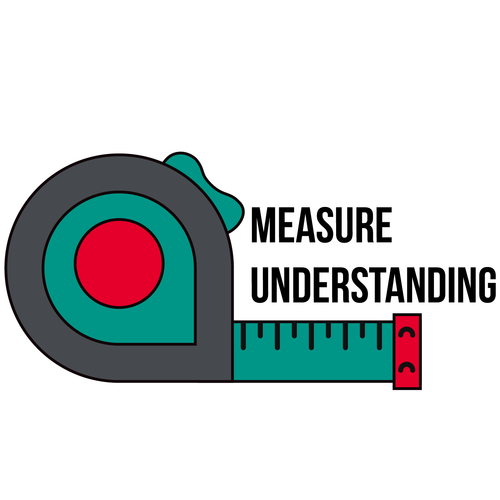
Exit Ticket:
- Instruction:
- Have participants write on their worksheet or share out loud the following question(s).
- Why are muscles important?
- What are some exercises you can do to improve muscular strength?
- What are some exercises you can do to improve muscular endurance?
- Have participants write on their worksheet or share out loud the following question(s).
Bibliography
- Bird, SR. & Hawley, JA. (2016). Update on the effects of physical activity on insulin sensitivity in humans. BMJ Open Sports Exerc Med 2(1): e000143.
- Centers for Disease Control and Prevention. (2018). Physical activity facts. Retrieved From: https://www.cdc.gov/healthyschools/p...vity/facts.htm
- Centers for Disease Control and Prevention. (2004). Body Composition Data for Individuals 8 Years of Age and Older: U.S. Population, 1999–2004. Retrieved From: https://www.cdc.gov/nchs/data/series/sr_11/sr11_250.pdf
- Dor-Haim H, Barak S, Horowitz M, Yaakobi E, Katzburg S, Swissa M, et al. (2018). Improvement in cardiac dysfunction with a novel circuit training method combining simultaneous aerobic-resistance exercises. A randomized trial. PLoS ONE 13(1): e0188551.
- Kim Y-S, Kim D-Y, Ha M-S. (2016). Effect of the push-up exercise at different palmar width on muscle activities. Journal of Physical Therapy Science 28(2): 446-449.
- National Institute of Diabetes and Digestive and Kidney Diseases. (2016). What is diabetes? Retrieved From: https://www.niddk.nih.gov/health-inf...at-is-diabetes
- Romero-Arenas S, Martínez-Pascual M, Alcaraz PE. (2013). Impact of Resistance Circuit Training on Neuromuscular, Cardiorespiratory and Body Composition Adaptations in the Elderly. Aging and Disease 4(5):256-263.
- Shawn Arent. (2017). How to do a proper pushup. Retrieved From: youtu.be/M7fWdJlDxPQ
- S. Department of Health and Human Services. (2008). 2008 Physical Activity Guidelines for Americans. Retrieved From: https://health.gov/paguidelines/pdf/paguide.pdf
- TED-Ed. (2017). How your muscular system works – Emma Bryce. Retrieved From: youtu.be/VVL-8zr2hk4
- TED-Ed. (2015). What makes muscles grow? – Jeffrey Siegel. Retrieved From: youtu.be/2tM1LFFxeKg
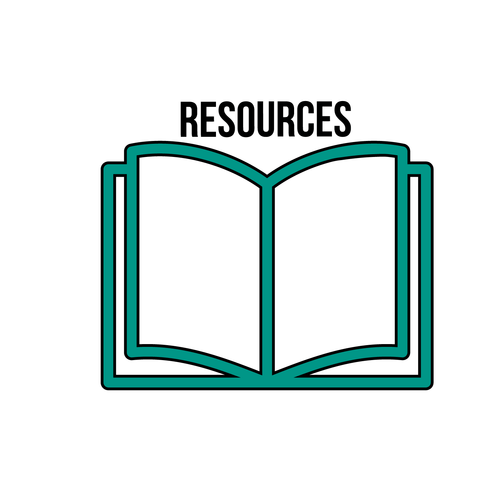
- Turbulence Training. (2013). 5 at-home exercises you can use to build muscle without equipment. Retrieved From: youtu.be/xCRUFI0XcB0
This lesson was created in partnership with Albert Einstein College of Medicine Department of Epidemiology and Population Health with funding support by the National Institutes of Health NIDDK Grant R01DK097096.

